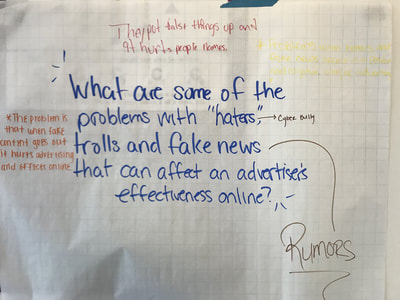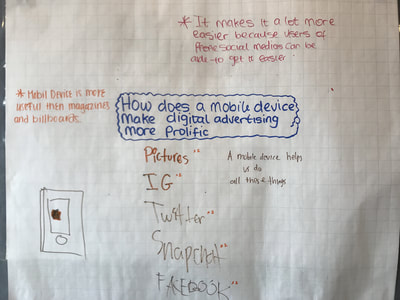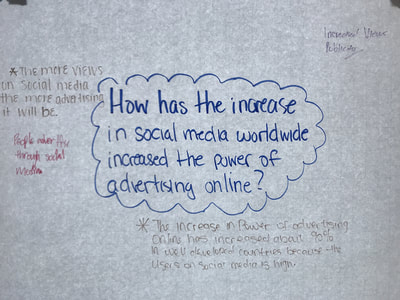The Economics of Social Media
THE ECONOMICS OF SOCIAL MEDIA OVERVIEW
Over the past ten years, there has been a tremendous growth in social media and technology. With the development of online and mobile interfaces come the problems of fake news, false advertisement, and cyber-bullying. I chose the economics of social media as a real-world problem for my students to speak, write, and think about, since it is a topic that is particularly relevant to them, especially as urban high school students. Almost all of my students have mobile phones and own multiple social media accounts. Many have previously reflected on how social media affects their friendships, emotions, and beliefs. Therefore, I created a lesson in which students engaged in reading a research article, viewing a presentation, citing resources, writing a reflection, and creating a gallery walk about the impact of social media.
Please scroll down or click on the table of contents below to learn more about how my students engage in speaking, writing, and thinking about real-world problems.
TABLE OF CONTENTS
Lesson Plan
Lesson Presentation
Lesson Texts
Student Work
Gallery Walk
Teacher Reflection
Over the past ten years, there has been a tremendous growth in social media and technology. With the development of online and mobile interfaces come the problems of fake news, false advertisement, and cyber-bullying. I chose the economics of social media as a real-world problem for my students to speak, write, and think about, since it is a topic that is particularly relevant to them, especially as urban high school students. Almost all of my students have mobile phones and own multiple social media accounts. Many have previously reflected on how social media affects their friendships, emotions, and beliefs. Therefore, I created a lesson in which students engaged in reading a research article, viewing a presentation, citing resources, writing a reflection, and creating a gallery walk about the impact of social media.
Please scroll down or click on the table of contents below to learn more about how my students engage in speaking, writing, and thinking about real-world problems.
TABLE OF CONTENTS
Lesson Plan
Lesson Presentation
Lesson Texts
Student Work
Gallery Walk
Teacher Reflection



